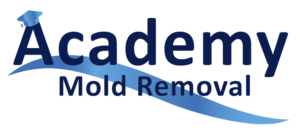Attic Mold Removal: Effective Solutions for a Clean and Safe Attic
September 21, 2024Attic Mold Removal: Everything You Need to Know to Prevent and Remove Mold
September 21, 2024When dealing with mold in your attic, the process of attic mold removal can be challenging if not done correctly. Many homeowners make mistakes during mold remediation that can actually worsen the problem or cause harm to their home’s structure and their health. Avoiding these common pitfalls will ensure that the mold is properly removed and that it doesn’t return. In this article, we’ll explore the most frequent mistakes people make during attic mold removal and how you can avoid them.
1. Ignoring the Source of Moisture
One of the most critical mistakes in attic mold removal is failing to address the underlying moisture problem. Mold thrives in damp environments, so without eliminating the source of the moisture—whether it’s a roof leak, poor ventilation, or condensation—mold will inevitably return. Before tackling the mold itself, always identify and fix the cause of the moisture. This could include repairing roof damage, adding ventilation systems, or improving insulation.
2. Using Ineffective Cleaning Solutions
Not all cleaning products are effective at killing mold. A common mistake is relying on household cleaners like soap and water, which may not completely eliminate mold spores. For effective attic mold removal, use proven mold-killing solutions such as bleach, vinegar, or commercial mold removers specifically designed for mold remediation. Additionally, make sure you clean the entire affected area thoroughly, as leaving even small traces of mold can lead to regrowth.
3. Removing Mold Without Proper Protective Gear
Attempting attic mold removal without wearing the right protective gear is a serious mistake that can expose you to harmful mold spores. Inhaling or coming into contact with mold can lead to respiratory issues, skin irritation, and other health problems. Always wear a mask (preferably an N95 respirator), gloves, and protective eyewear when handling mold to reduce your risk of exposure. For large infestations, consider hiring professionals who have the necessary safety equipment.
4. Disturbing the Mold Without Containment
Another common error is disturbing mold without properly containing the area. Mold spores can easily become airborne and spread to other parts of your home, leading to a more widespread problem. To prevent this, seal off the attic from the rest of the house before starting the attic mold removal process. Use plastic sheeting to cover doorways, vents, and other openings to minimize the spread of mold spores.
5. Trying to Remove Large Mold Infestations on Your Own
While it may be tempting to save money by handling mold removal yourself, large mold infestations are often too difficult and dangerous for DIY solutions. If the mold covers a significant portion of your attic or has spread to other areas of your home, it’s best to call in professional mold remediation specialists. Professionals have the tools and expertise to carry out attic mold removal safely and effectively, ensuring the mold is completely eradicated.
6. Failing to Properly Ventilate the Attic After Removal
Once you’ve completed attic mold removal, it’s crucial to ensure proper ventilation to prevent mold from returning. Poor ventilation is one of the leading causes of attic mold, as it allows moisture to accumulate. Installing roof vents, attic fans, or additional insulation will help keep the space dry and prevent condensation. Failing to improve attic ventilation after mold removal will only invite future mold growth.
7. Disposing of Contaminated Materials Incorrectly
When removing mold-infested insulation, wood, or drywall, another common mistake is improper disposal. Simply throwing contaminated materials in your household trash can lead to the spread of mold spores. Be sure to carefully bag and seal all mold-contaminated items and dispose of them according to local regulations. Proper disposal is essential to prevent cross-contamination in other areas of your home.
8. Skipping Regular Inspections After Mold Removal
After completing attic mold removal, some homeowners mistakenly believe the problem is permanently solved. However, without regular inspections, mold can reappear unnoticed, especially if moisture issues return. Schedule periodic inspections of your attic to catch any signs of mold early and address them before they become serious.
Conclusion
Effective attic mold removal requires more than just scrubbing away visible mold. Avoiding these common mistakes can help ensure the mold is eliminated and doesn’t return. By addressing the root cause of the moisture, using the right cleaning methods, wearing protective gear, and improving attic ventilation, you can protect both your home and your health from the dangers of mold.
